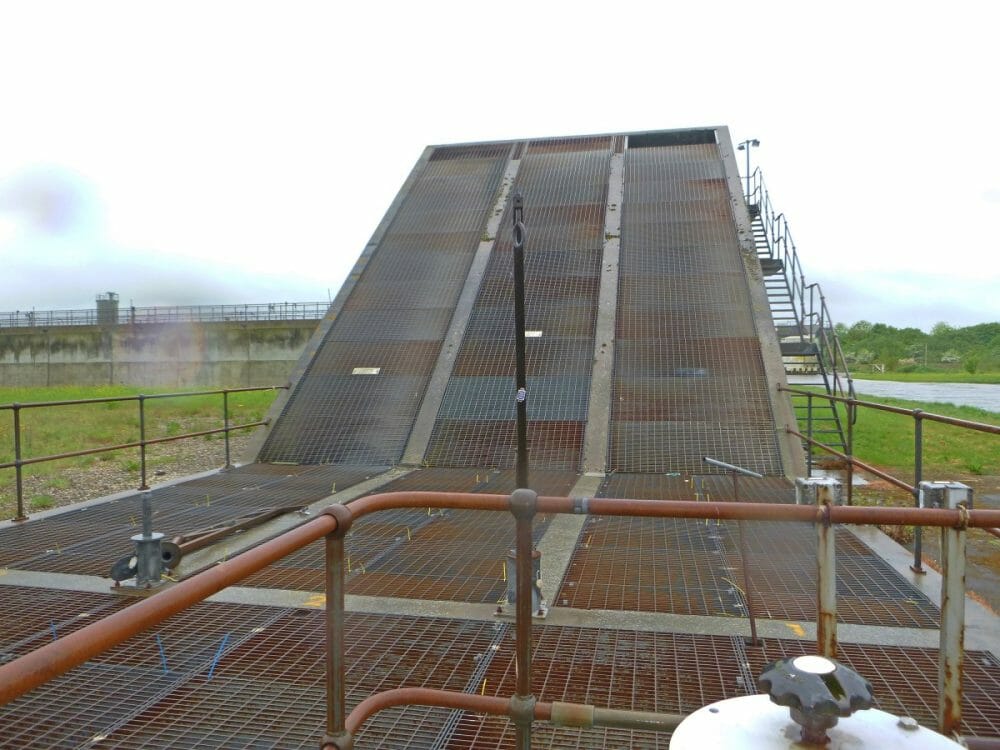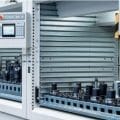Successful trials at three Anglian Water sites prove variable speed drives can cut the energy used by Archimedes’ screws.
A series of trials by Anglian Water, during which variable speed drives (VSDs) were used to control the speed of Archimedes’ screws, has resulted in a £26,000 energy saving in three months across three wastewater treatment sites.
The sites, at Newton Marsh, Flag Fen and Hibaldstow, each use three Archimedes’ screws, each controlled by a 90 kW motor, to move activated sludge from a sump to the aeration dyke. Smart ‘multi-pump’ software built into the VSDs lets the drives communicate with each other. The VSDs can then adjust the speed of the screws to keep sludge balanced evenly between them, ensuring throughput remains constant. By doing this, sludge is always fully transferred to the aeration dyke, ensuring that none is left on the actual screws, to trickle back down to the sump. Should this happen, then more energy would be needed to, once again, lift the same sludge.

Previously, each screw motor operated independently in a duty/assist/assist cycle. The duty screw would run constantly at full speed. An ultrasonic detector measured the sludge level in the sump. If this approached the selected depth, a second screw was switched on and then a third, if needed.
When the level of sludge in the sump dropped, one of the assist screws would be stopped. However, this would cause the sludge in the screw to descend back into the sump, raising concerns within Anglian Water as to how much energy was being wasted re-pumping this liquid.
Working with ABB Value Provider, Inverter Drives Systems (IDS), Anglian Water investigated the use of VSDs on Archimedes’ screws at the three sites. A 90 kW ABB VSD for water and wastewater applications was temporarily installed on the screws at Newton Marsh in Tetney, Lincolnshire.
Blaise Ford of IDS comments: “Instead of switching the screws on and off, the VSDs run them continuously. Signals from the level sensor in the sump are used to determine the correct speed of the motor and hence the screw. This varies between 25-60 Hz to maintain a fixed level in the sump.
“Previous attempts at applying VSDs to an Archimedes’ screw showed little benefit as the power consumption per cubic metre of sludge, over a wide speed range and flow rates, remains fairly constant. However, we adopted a new technique of ensuring the drives communicate with each other to balance the motor speeds and thus the pumping rates to the screw application, and found it worked well.”
Energy measurements reveal that the VSDs at the Newton Marsh site reduce energy use by 13.7 percent compared to the previous method, the equivalent of £10,000 a year. At Flag Fen, the control system is saving 19.4 percent on energy use, the equivalent of £16,000 a year. The savings achieved at Hibaldstow are even greater, at 32 percent.
The VSDs also help to reduce starting current. The motors previously used variable voltage soft starters. Even with these, the starting currents on the screws at Newton Marsh were 600 A. By using the VSDs, this has been cut from 600 A to 180 A, helping to reduce wear on belts, drive chains and bearings.





